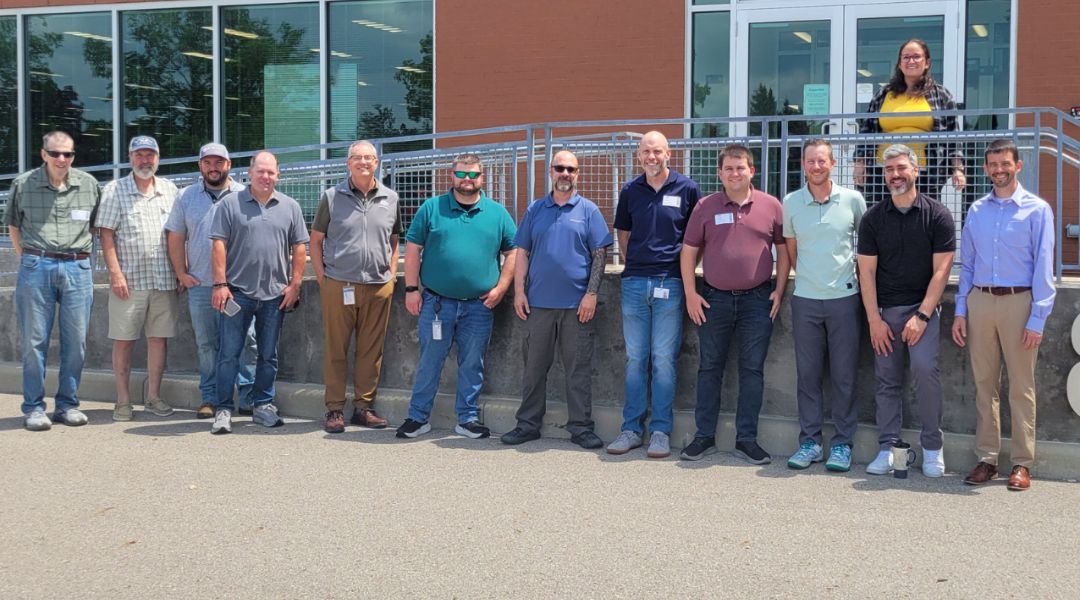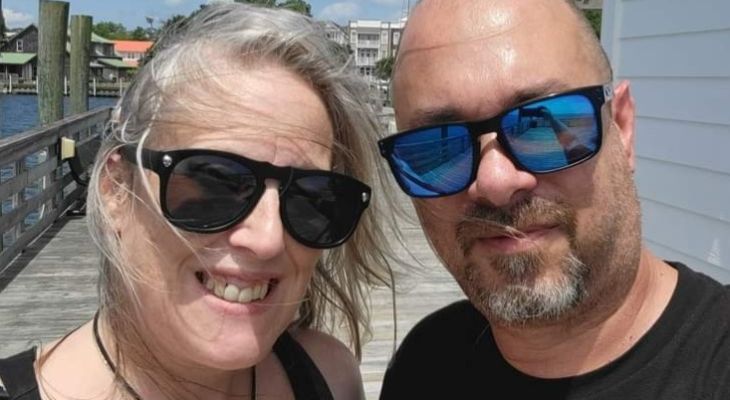As our Energizers for a Cure participated in Pelotonia, we reflected on the reason for the ride. Ted Moore, a member of the Telecommunications Engineering team, was diagnosed with stage four esophageal cancer in 2022. Research by The Ohio State University Comprehensive Cancer Center – Arthur G. James Cancer Hospital and Richard J. Solove Research Institute played a crucial role in his treatment plan. This is his story.
My cancer journey began on a cold October morning before Halloween in 2022. After weeks of not sleeping well from the pain in my abdomen, I decided to go for testing. The CT scan revealed swollen lymph nodes in my upper abdomen, liver lesions, and a suspected mass at the esophageal junction.
I was admitted to the hospital right away. Over the next couple of weeks, a battery of tests was completed, and it was confirmed that I had esophageal cancer.
By this time, cancer cells had already broken away from the mass and spread to my liver, and lymph nodes in my upper abdomen and neck. The oncologist said I was stage 4 and gave me a year to live.
I was healthy and enjoying life with my fiancé, and this shook me to my core. I thought my life would be much longer. I had not done everything I wanted to do. I was abruptly confronted with a living will. This was going to take physical and mental strength if I was going to survive. Instead of planning to die, I was going to plan to live.
I notified my supervisor, Gary Sparano, and director, Brad Holt, at AEP of my diagnosis and what I expected my treatment to be. Gary and Brad have had my back from the very beginning, and they gave me the ability to continue working from home while focusing on my health and well-being.

I was not going to accept the uncertainty attached to my diagnosis, so I met with my primary care physician, who referred me to the James for a second opinion.
My oncologist at the James discovered in previous testing that my cancer was positive for a protein called human epidermal growth factor receptor two. This meant that my cancer would grow and spread faster, but this also meant there was a targeted drug that works to destroy these types of cancer cells and slow down their growth. A reason to hope – it was treatable.
Shortly after, I began a targeted treatment along with chemotherapy, and immunotherapy with the James. I now had the top doctors who were giving me the most aggressive treatment they could. I had the best support group in my fiancé, family, friends, and everyone at AEP.

Gary offered to donate vacation time to cover my appointments if needed, and still does to this day. Soon after discovering my diagnosis, team members, and AEP employees that I have never met volunteered to donate their vacation time. They scheduled meetings around my treatments and appointments, listen to the details of all my testing and chemotherapy, all while supporting me with kindness and trust.
Gary organized a dinner with the team to celebrate life and a year of kicking cancer's butt, meeting for year two as well.
In March 2025, after my first PET scan since my cancer diagnosis, it was confirmed that my treatment was effective and the tumor had shrunk enough to be operable. To gather more information, the thoracic surgeon conducted an endoscopy with biopsies the following week. The results came back benign! The oncologist suggested pausing treatment to monitor my condition with regular scans and checks.
AEP plays a significant role in supporting me in my cancer journey. The flexibility allows me to adjust my hours, work remotely, and take time off for recovery. They make it possible for me to focus on my health without worrying about financial strain.
My health care plan has covered close to all the cost, and all the hours that would be consumed by chemotherapy, CT scans, echocardiograms, and appointments with my cancer team have been covered by the extensive hours of sick time provided by AEP.
It takes a village, from my fiancé who has been by my side for every chemo session and appointment, family and friends, my work family at AEP, and my cancer team at the James. They all believed I was going to survive, giving me the encouragement that I did not have yet.
It’s been two and a half years, and there’s no evidence of cancer. Ringing the bell is no longer just a distant hope—it's becoming a tangible reality. Each treatment, each day of strength, each moment of resilience has brought me closer to that powerful sound. It's more than just a bell; it's a symbol of survival, of battles fought and won, of pain endured and hope sustained. It's the sound of a new chapter beginning, one filled with healing, gratitude, and life.